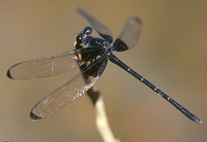Abstract
The Sundaland species of the genus Dysphaea were studied using molecular and morphological methods. Four species are recognized: D. dimidiata Selys, D. lugens Selys, D. ulu spec. nov. (holotype ♂, from Borneo, Sarawak, Miri division, Upper Baram, Sungai Pejelai, Ulu Moh, 24 viii 2014; deposited in RMNH) and D. vanida spec. nov. (holotype ♂, from Thailand, Ranong province, Khlong Nakha, Khlong Bang Man, 12–13 v 1999; deposited in RMNH). The four species are described and illustrated for both sexes, with keys provided. The type specimens of the four Dysphaea taxa named by E. de Selys Longchamps, i.e. dimidiata, limbata, semilimbata and lugens, were studied and their taxonomic status is discussed. Lectotypes are designated for D. dimidiata and D. limbata. D. dimidiata is recorded from Palawan (the Philippines) for the first time. A molecular analysis using three markers (COI, 16S and 28S) is presented. This includes specimens of three Sundaland species of the genus (D. lugens missing) and two congeners from other regions (D. basi-tincta and D. gloriosa). Notes and photographs of the male holotype of D. walli Fraser (from Maymyo, Burma) are provided.

